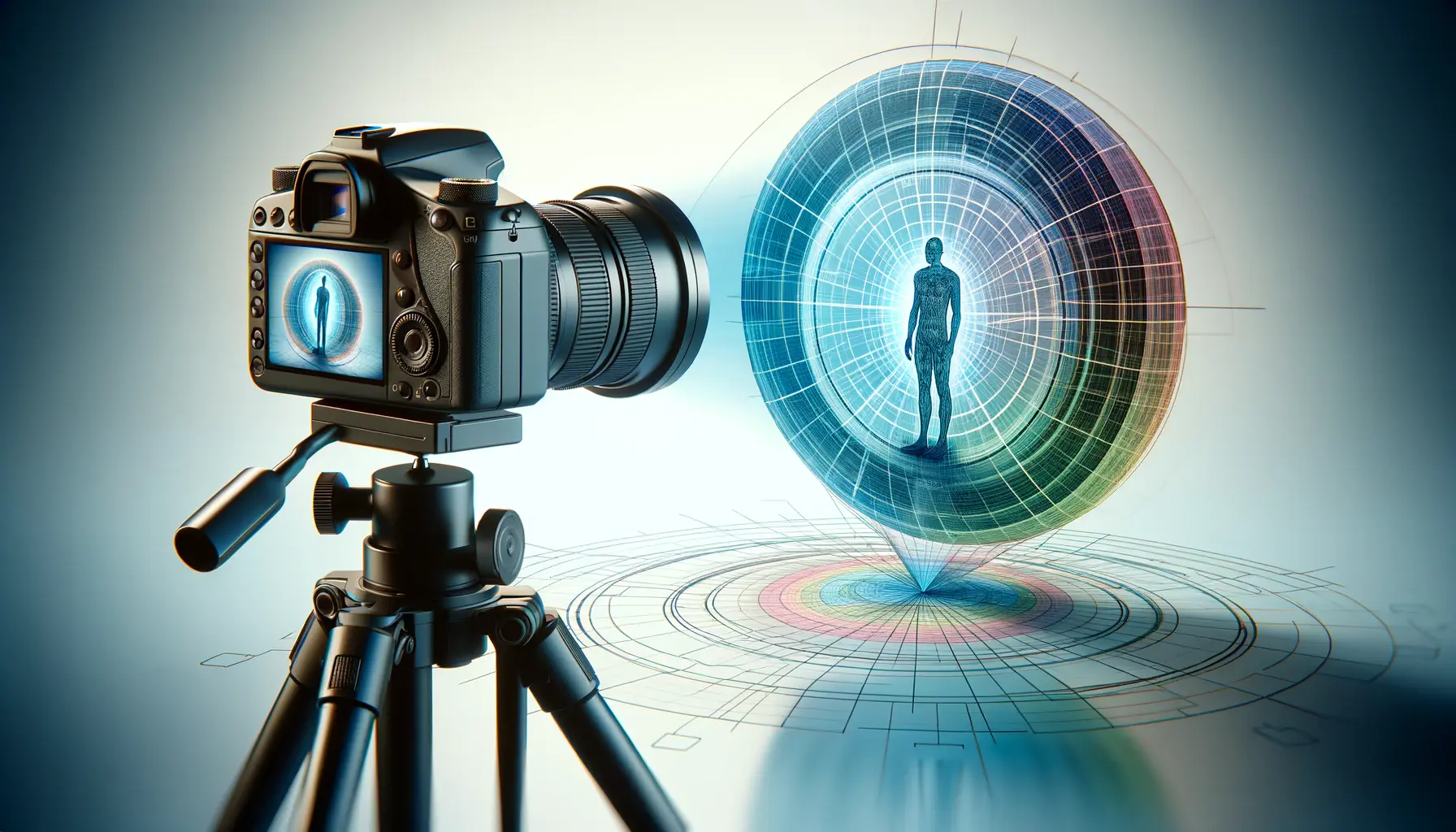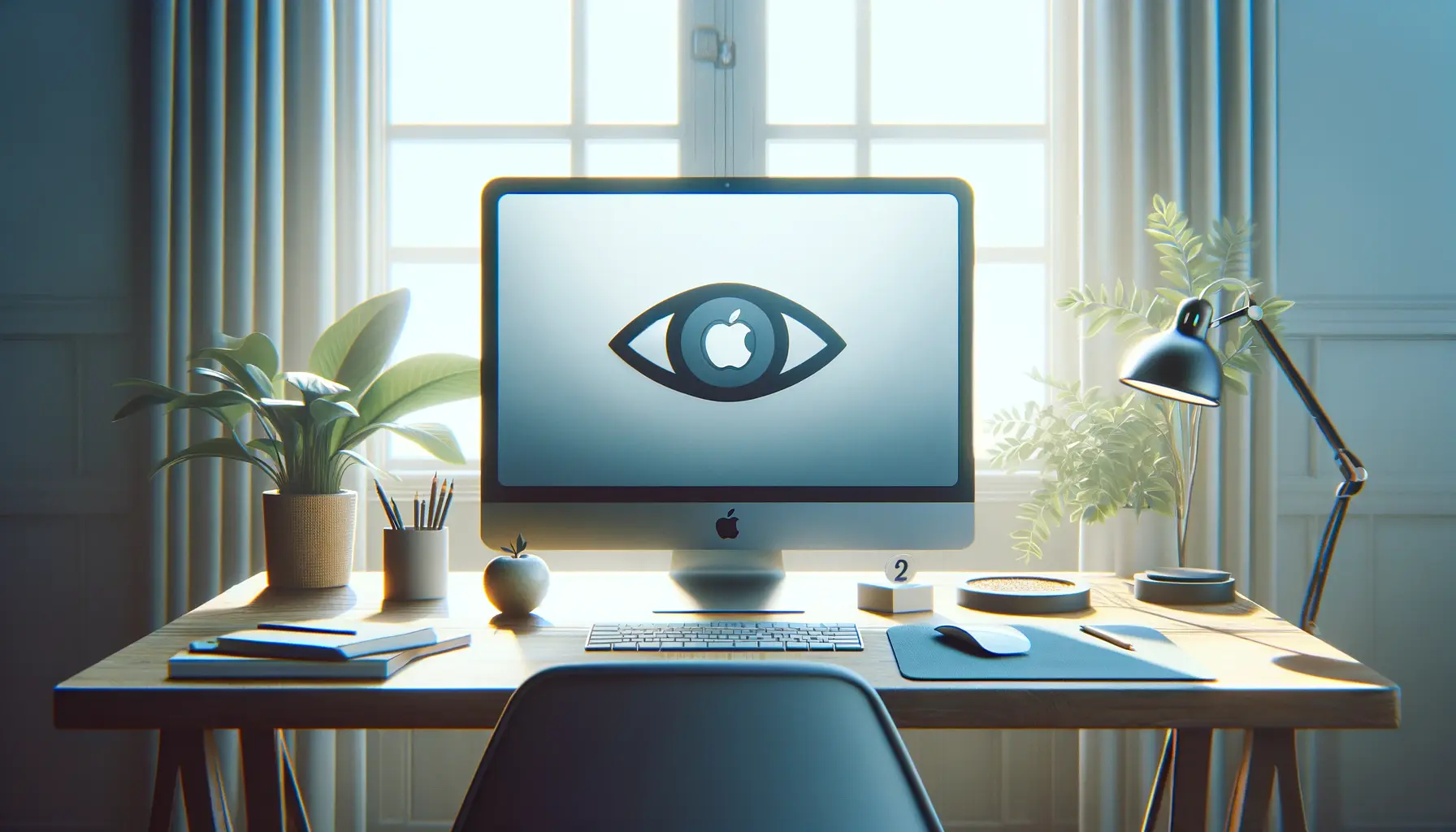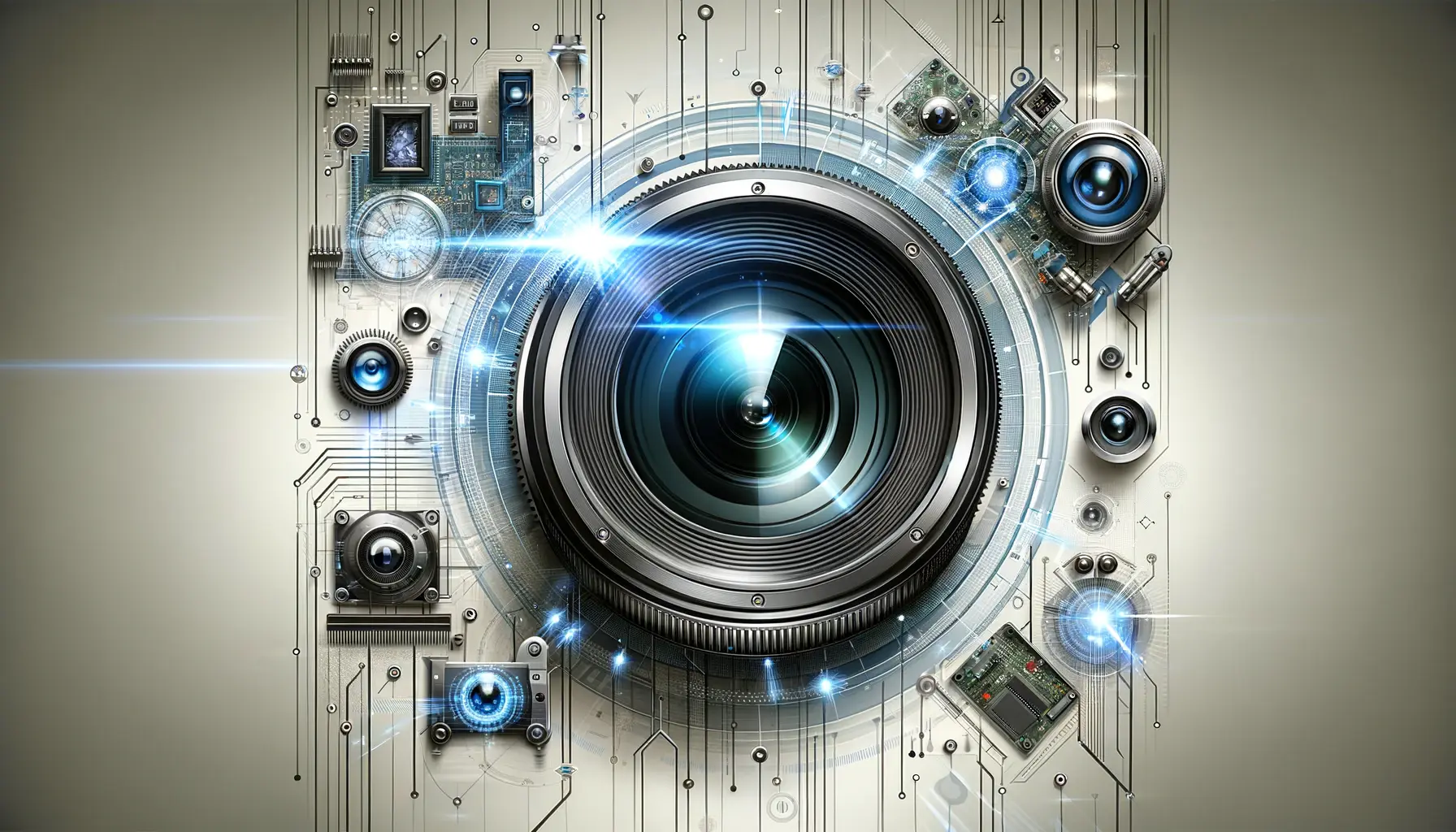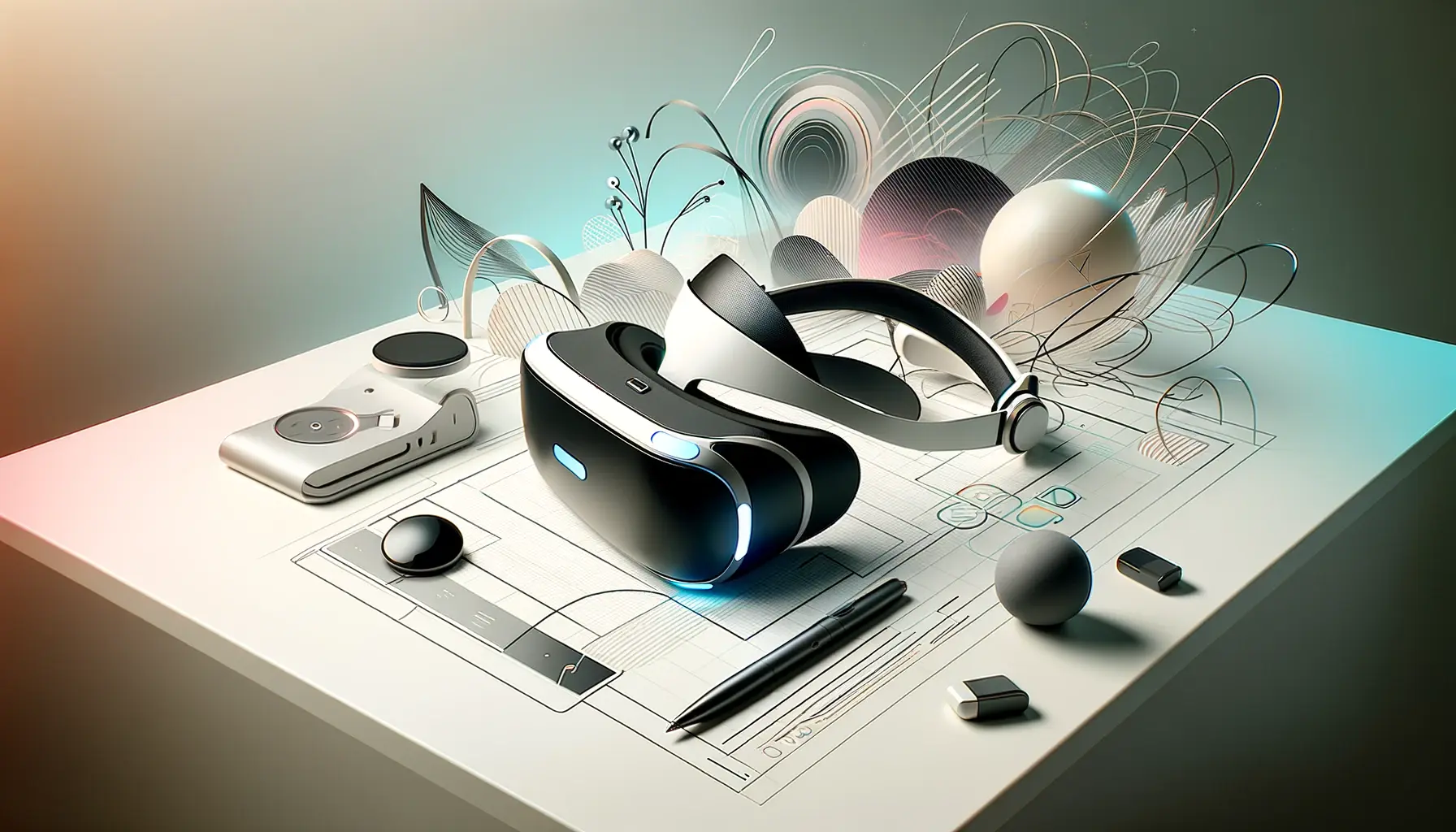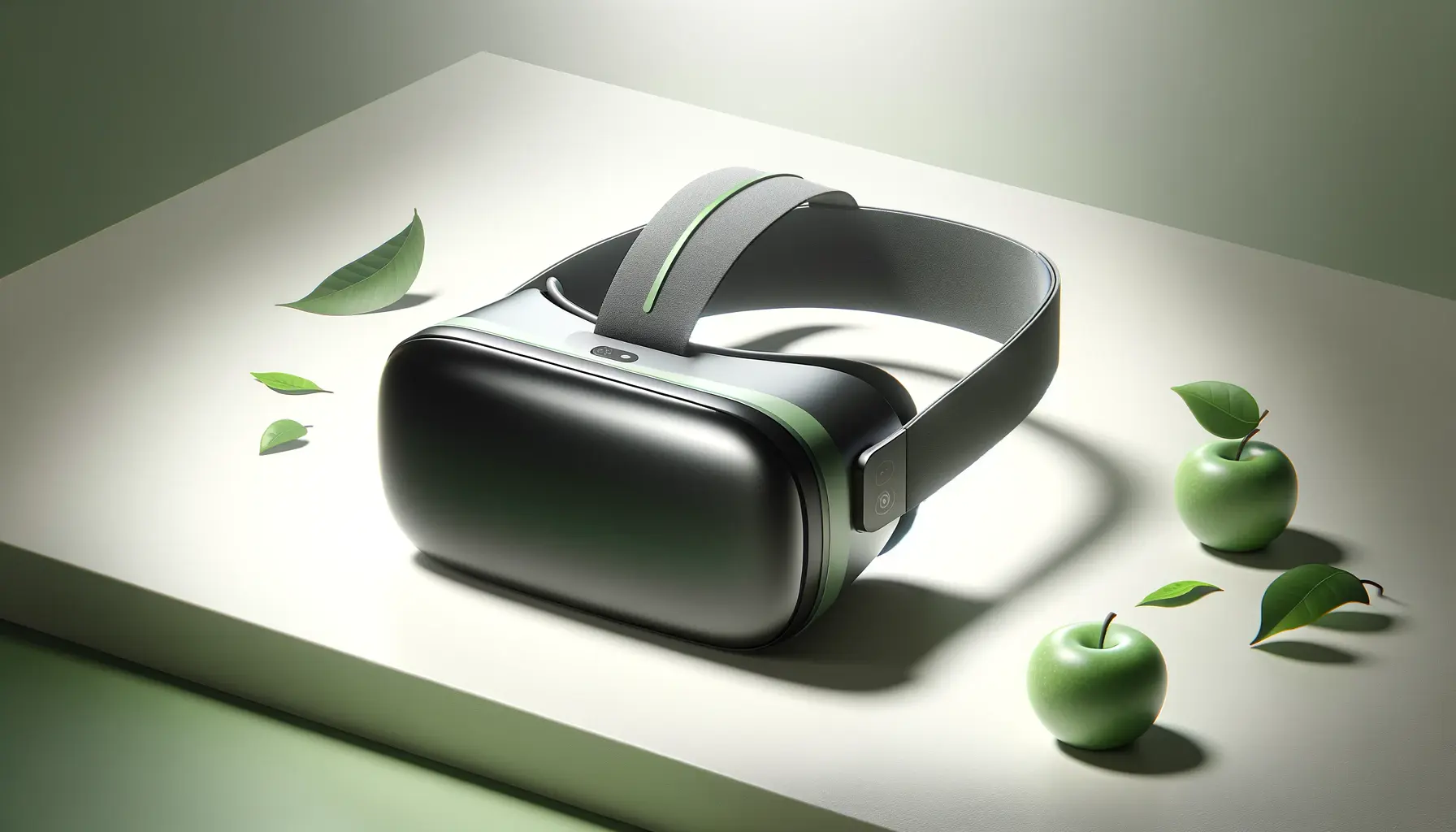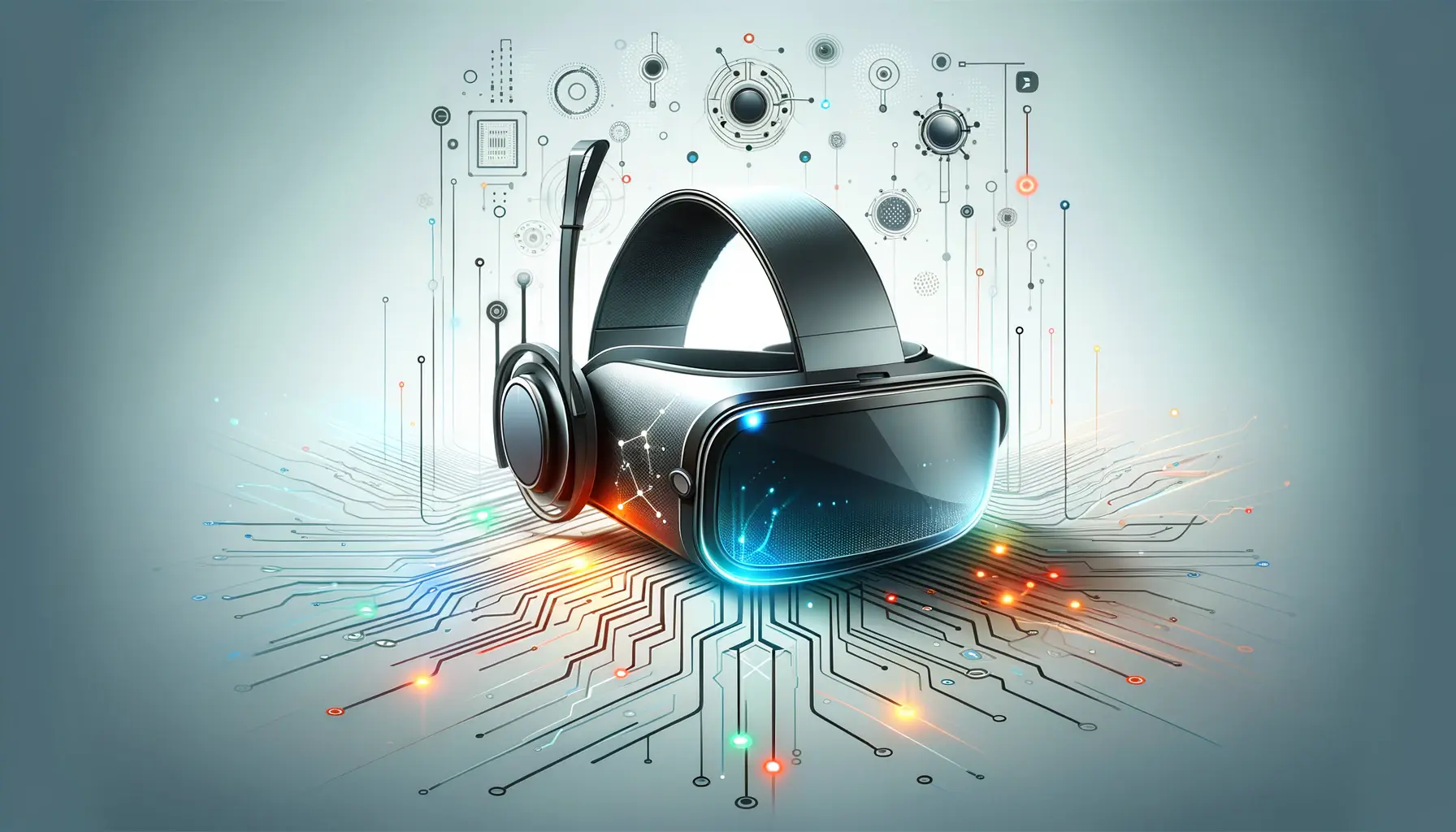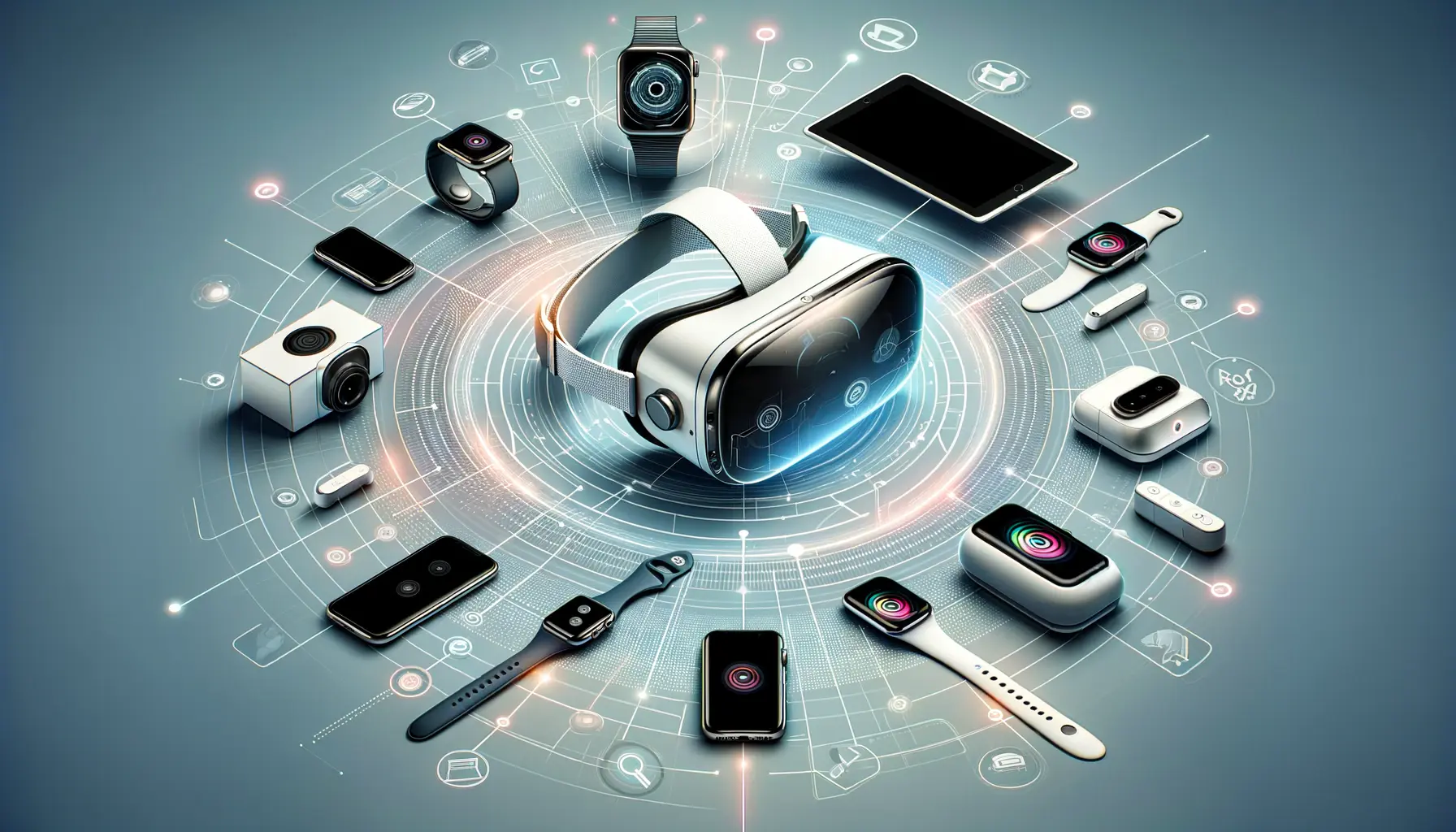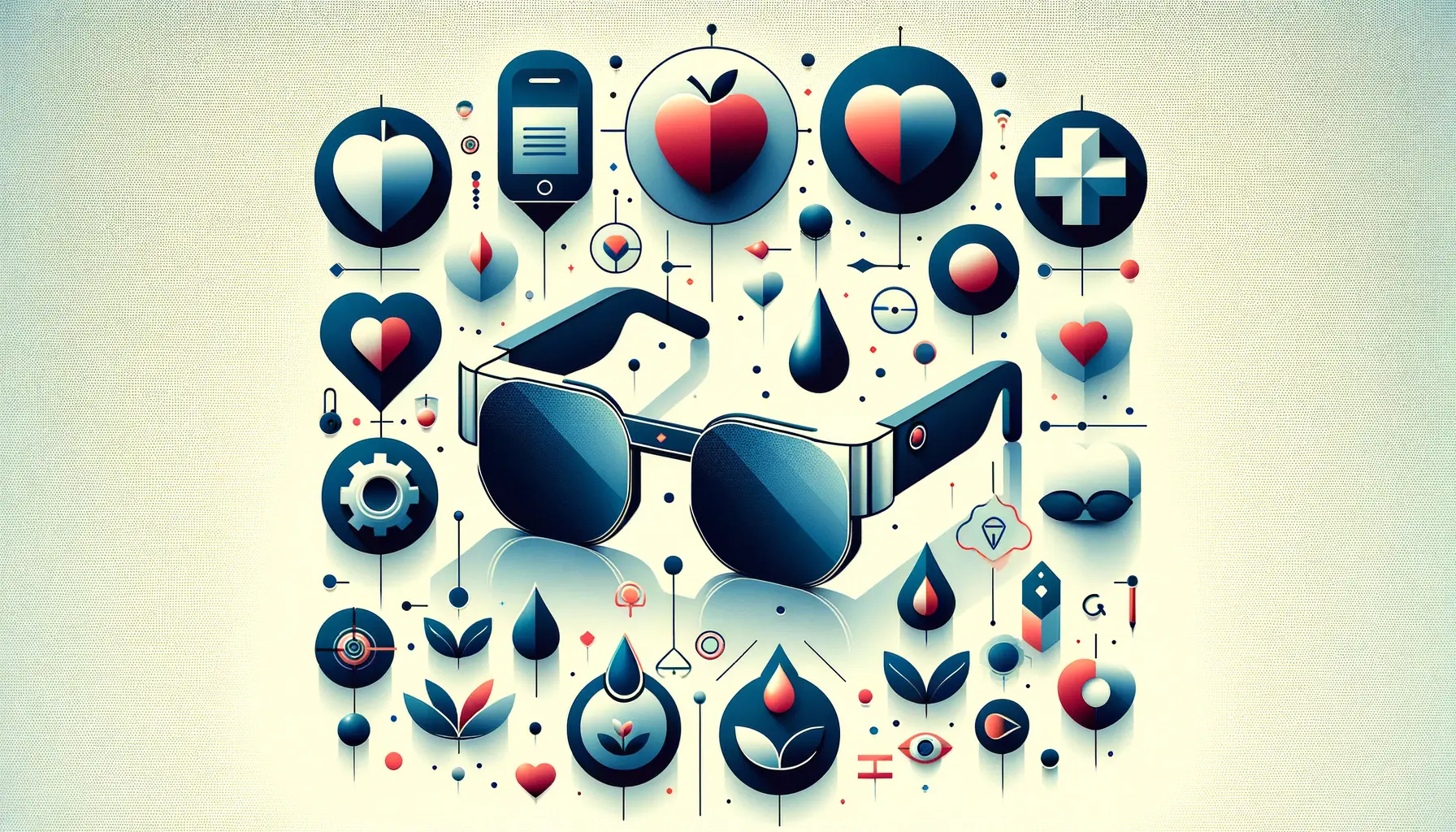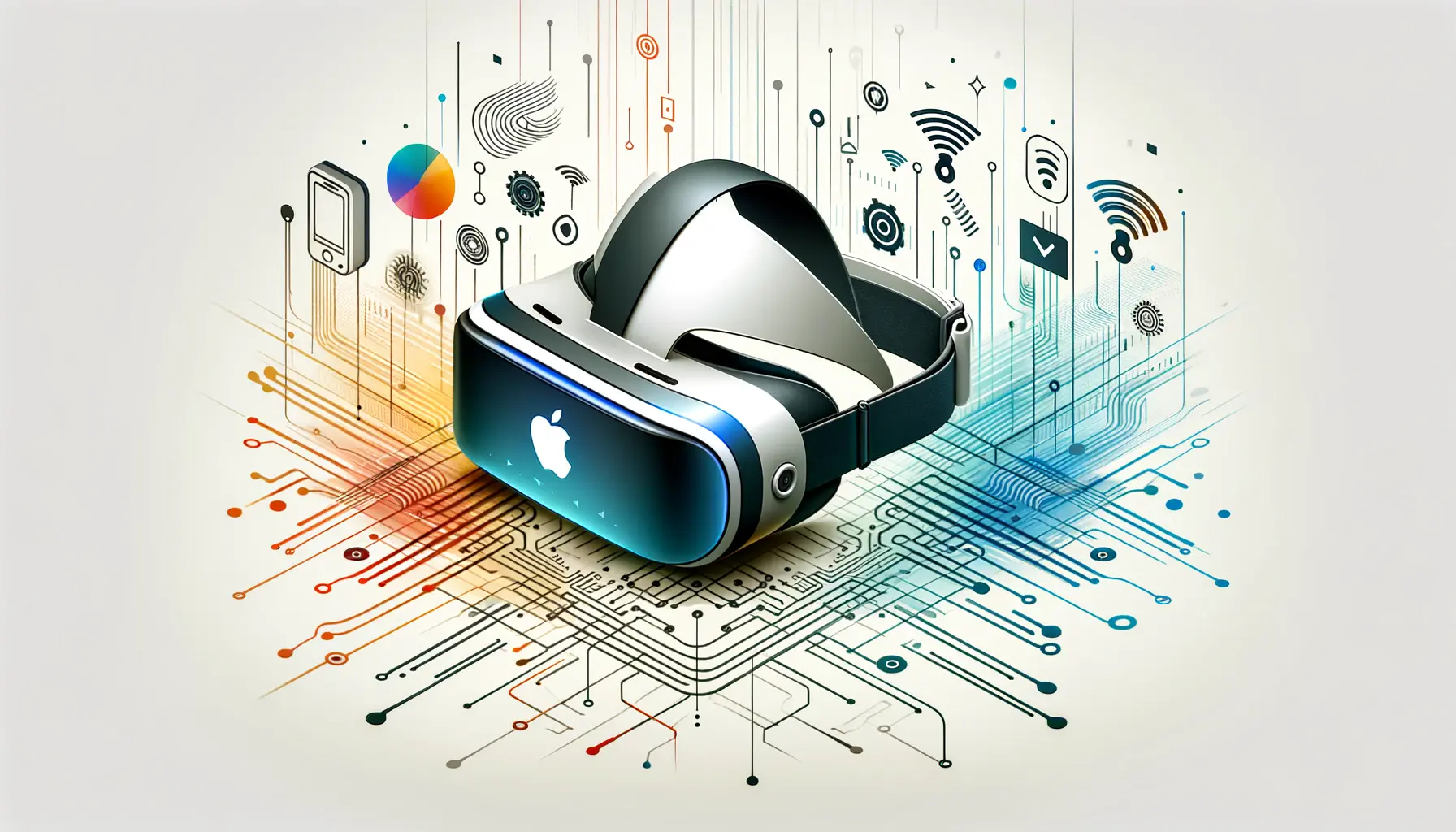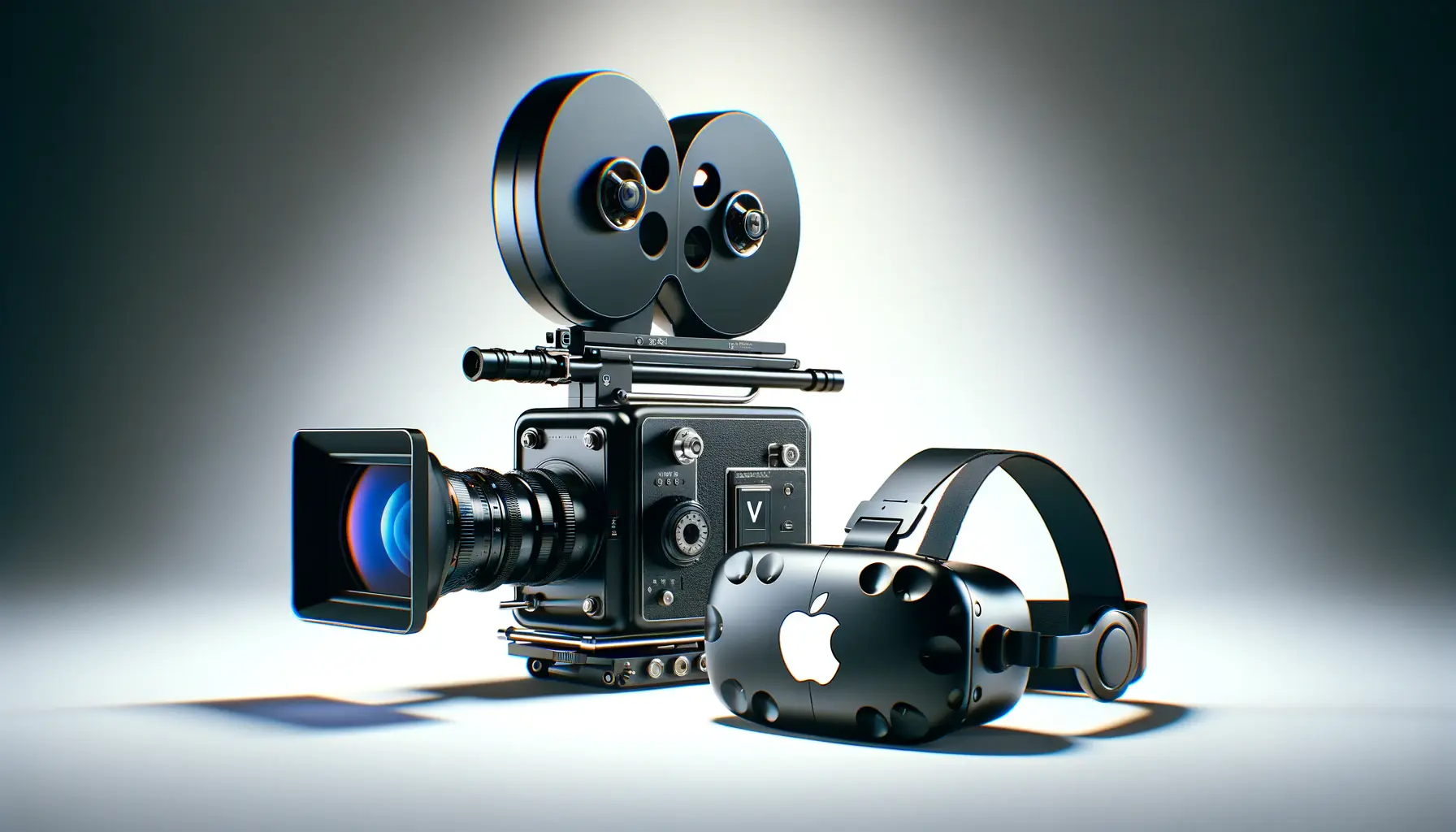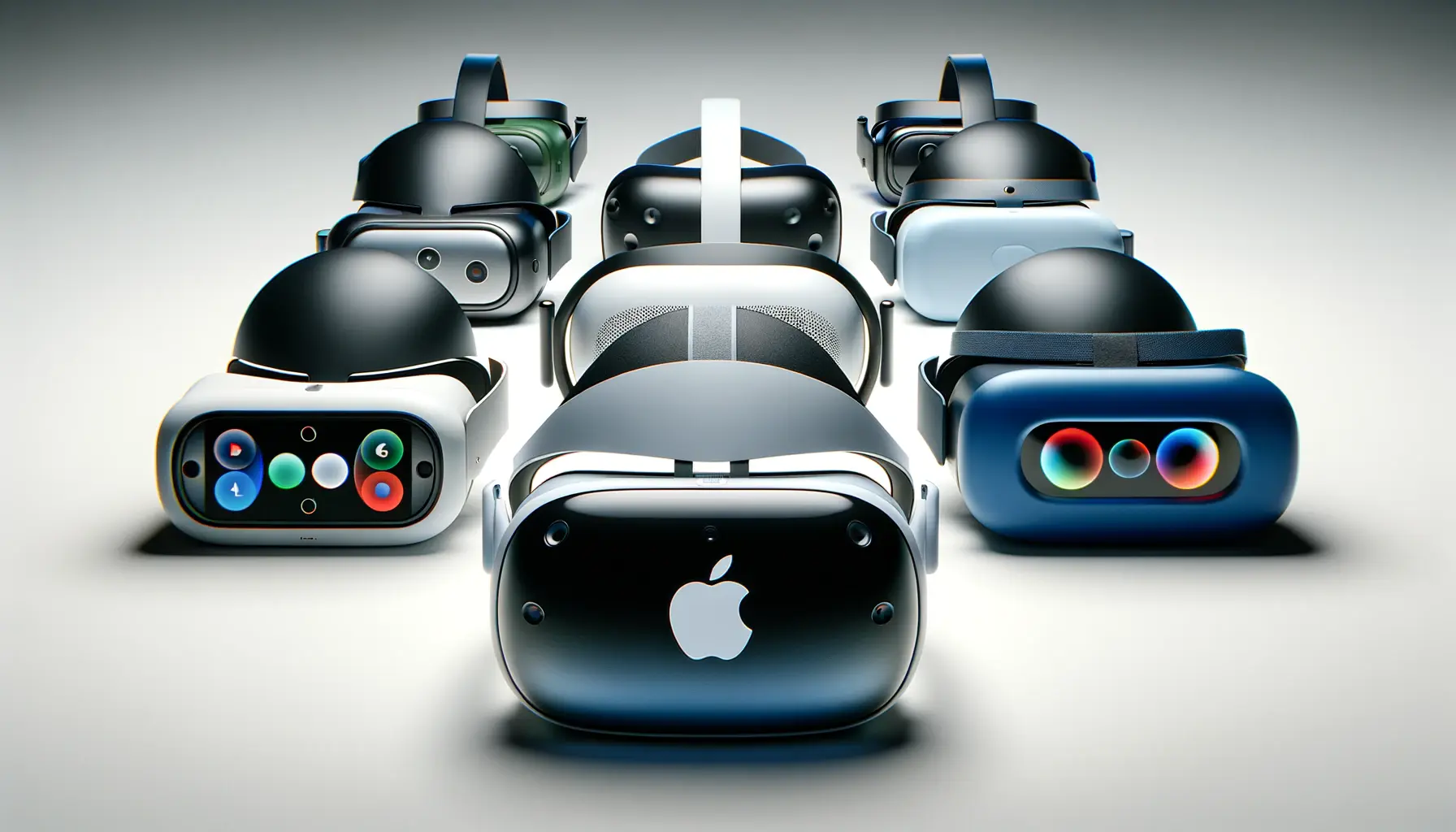Entering the realm of 3D photography with the Vision Pro marks a significant leap forward in how we perceive and interact with digital content.
This innovative device, emerging from the confluence of technology and creativity, offers users an unparalleled opportunity to capture the world around them in stunning three-dimensional detail.
The Vision Pro, with its advanced features and intuitive design, is not just a gadget but a gateway to a new dimension of visual storytelling.
As we delve into the capabilities of the Vision Pro, it becomes clear that this tool is set to redefine the boundaries of photography, blending the real with the virtual in ways previously unimaginable.
The essence of capturing 3D photos lies not just in the technical prowess of the device but in the vision it empowers photographers with.
The Vision Pro enables users to see beyond the flat images of yesterday, offering a depth and realism that brings photographs to life.
Whether you’re a professional photographer looking to explore new horizons or a hobbyist eager to capture memories in a more vivid format, the Vision Pro stands ready to transform your visual experiences.
This article aims to guide you through the process of capturing 3D photos with the Vision Pro, ensuring that you can make the most of this revolutionary technology.
- Understanding the Vision Pro Technology
- Preparing for a 3D Photo Shoot
- Capturing the Perfect 3D Shot
- Editing and Enhancing 3D Photos
- Viewing and Experiencing 3D Photos
- Future Trends in 3D Photography
- Practical Applications of 3D Photography
- Embracing the Future with Vision Pro
- Vision Pro 3D Photography FAQs
Understanding the Vision Pro Technology
The Vision Pro is not just another camera; it’s a sophisticated piece of technology designed to capture life in three dimensions.
At its core, the Vision Pro utilizes an array of cameras and sensors to record spatial information, creating images that offer depth and perspective.
This technology, combined with advanced software algorithms, allows the Vision Pro to render photos that can be viewed in 3D, providing an immersive experience that traditional photography cannot match.
One of the key features of the Vision Pro is its ability to seamlessly integrate with other devices in the ecosystem, making it incredibly versatile.
Whether you’re looking to view your 3D photos on a compatible smartphone, tablet, or even through a virtual reality headset, the Vision Pro ensures your images can be enjoyed in a variety of formats.
This flexibility opens up new possibilities for sharing and experiencing photographs, making every captured moment a doorway to a new world.
Setting Up Your Vision Pro
Before diving into the world of 3D photography, it’s essential to get acquainted with your Vision Pro.
Setting up the device is a straightforward process, designed to be user-friendly and intuitive.
From charging the device to navigating its interface, every step has been thoughtfully engineered to enhance your photography journey.
The initial setup also includes customizing settings to suit your preferences, ensuring that you have the optimal experience right from the start.
Understanding the various modes and features available on the Vision Pro is crucial for capturing high-quality 3D photos.
The device offers a range of options, from automatic settings for beginners to manual controls for more experienced photographers.
Familiarizing yourself with these features will allow you to take full advantage of the Vision Pro’s capabilities, enabling you to capture stunning 3D images that truly stand out.
The Vision Pro’s integration with an ecosystem of devices enhances the versatility and enjoyment of your 3D photos, making it a pivotal tool for modern photography.
Preparing for a 3D Photo Shoot
Embarking on a 3D photo shoot with the Vision Pro requires a bit more preparation than your traditional photography session.
The three-dimensional aspect adds layers of complexity but also opportunities for creativity that were previously unattainable.
Here’s how to ensure you’re fully prepared to capture the world in 3D.
Choosing the Right Environment
The environment plays a pivotal role in the success of a 3D photo shoot.
Unlike standard photography, where a flat image can sometimes mask less-than-ideal conditions, 3D photography brings every detail to life.
Therefore, selecting an environment with rich textures, interesting depth cues, and dynamic lighting can significantly enhance the impact of your 3D photos.
When scouting locations, look for:
- Varied textures that will pop in 3D
- Strong foreground and background elements to enhance depth
- Natural light sources to create dynamic shadows and highlights
Understanding Lighting for 3D
Lighting in 3D photography isn’t just about ensuring your subject is well-lit; it’s about creating shadows and highlights that enhance the three-dimensional effect.
The interplay of light and shadow can dramatically affect the perception of depth in your photos, making lighting one of your most powerful tools.
Tips for mastering lighting in 3D photography include:
- Utilizing natural light for a soft, realistic depth effect
- Experimenting with multiple light sources to create interesting shadows
- Avoiding flat lighting, which can diminish the 3D effect
Configuring the Vision Pro for Optimal Results
Before you start shooting, it’s crucial to configure your Vision Pro for the specific conditions of your photo shoot.
This involves adjusting settings such as exposure, focus, and depth of field to match your environment and subject matter.
While the Vision Pro offers automatic settings that can handle a wide range of situations, taking the time to manually adjust these settings can lead to even more impressive results.
Key settings to consider adjusting:
- Exposure: To ensure your photos are neither too dark nor too bright
- Focus: To highlight your subject and create a clear depth effect
- Depth of Field: To control the extent of the background blur and focus on your subject
Experimenting with different environments and lighting conditions can unlock new creative possibilities in 3D photography, making each photo shoot a unique adventure.
Capturing the Perfect 3D Shot
With the Vision Pro correctly set up and your scene thoughtfully prepared, you’re now ready to capture the essence of your subject in full 3D glory.
The process of taking a 3D photo differs from traditional photography in several key aspects, primarily due to the additional dimension of depth.
Here’s how to ensure each shot you take fully utilizes the potential of 3D photography.
Composing Your 3D Scene
Composition in 3D photography goes beyond the rule of thirds and leading lines; it involves thinking spatially about how elements within your frame interact with each other in three dimensions.
Effective 3D composition can draw the viewer’s eye through the scene, creating a more immersive and engaging experience.
To compose a compelling 3D scene, consider:
- Placing objects at varying distances from the camera to enhance the sense of depth
- Using leading lines not just to guide the eye, but to emphasize the 3D structure of the scene
- Incorporating elements that protrude towards or recede from the viewer to heighten the 3D effect
Focusing and Depth of Field
In 3D photography, focus and depth of field take on new importance.
A well-focused subject with a carefully controlled depth of field can make your 3D photos pop, giving them a lifelike quality that flat images simply can’t match.
Strategies for mastering focus and depth of field in 3D include:
- Choosing a focal point that anchors the scene while allowing other elements to recede or advance in the background and foreground
- Adjusting the aperture to control the depth of field, making sure the background and foreground contribute to the 3D effect without overwhelming the main subject
- Using manual focus when necessary to ensure the most important elements of your scene are sharp
Timing and Movement
The dynamic nature of 3D photography means that timing and movement can greatly influence the outcome of your shots.
Capturing motion in 3D can convey a sense of action and vitality that is unparalleled in traditional photography.
Tips for capturing movement in 3D:
- Anticipate the action and position yourself to capture the moment with depth and context
- Experiment with shutter speeds to either freeze motion clearly or introduce a deliberate blur that emphasizes movement
- Consider the direction of movement and how it can enhance the 3D effect, such as objects moving towards or away from the camera
A well-composed 3D photo can transport viewers into the scene, offering them a virtual experience that’s as close to being there as possible.
Editing and Enhancing 3D Photos
After capturing your 3D photos with the Vision Pro, the next step is to bring them to life through editing.
While the raw shots may already look impressive, editing allows you to refine and enhance the images, ensuring they convey the intended depth and realism.
The process of editing 3D photos, however, requires a nuanced approach to preserve the spatial information while enhancing the visual appeal.
Software Tools for 3D Photo Editing
Choosing the right software is crucial for editing 3D photos effectively.
While many popular photo editing tools offer basic 3D editing capabilities, specialized software designed for 3D imagery can provide a more comprehensive set of tools tailored to the unique needs of 3D photo enhancement.
These tools allow for adjustments to depth maps, alignment of stereo pairs, and fine-tuning of the 3D effect to ensure a natural and immersive viewing experience.
Key features to look for in 3D photo editing software include:
- Depth map editing to adjust the perceived distance between objects in the photo
- Stereo alignment tools to ensure the left and right images are perfectly synced
- Color correction and enhancement features that work well with 3D images
Enhancing Depth and Realism
The goal of editing 3D photos is not just to correct imperfections but to enhance the sense of depth and realism that sets 3D photography apart.
This involves careful adjustments to contrast, brightness, and color to make the images pop while maintaining the delicate balance of depth cues that give the photo its three-dimensional quality.
Strategies for enhancing depth and realism:
- Adjusting contrast to emphasize depth layers within the photo
- Enhancing colors to make the scene more vibrant, while ensuring that color adjustments do not distort spatial perception
- Refining brightness and shadows to enhance the three-dimensional effect without flattening the image
Exporting and Sharing 3D Photos
Once your 3D photos are edited to perfection, the final step is to export and share them.
Exporting 3D photos involves choosing the right file format that preserves the 3D effect and is compatible with the platforms where you intend to share the images.
Common formats for 3D photos include MPO (Multi Picture Object) for 3D displays and anaglyph images for viewing with red/cyan glasses.
Additionally, some social media platforms and photo sharing services offer support for 3D images, allowing you to share your work with a wider audience.
Considerations for exporting and sharing 3D photos:
- Selecting a file format that matches your sharing platform’s requirements
- Ensuring the exported file maintains the quality and depth effect of the original edit
- Understanding the viewing requirements of your audience, such as special glasses or VR headsets
Editing is where the magic happens, transforming good 3D photos into great ones by enhancing depth, realism, and visual appeal.
Viewing and Experiencing 3D Photos
After capturing and editing your 3D photos, the final and most rewarding step is viewing and sharing these immersive images.
The experience of viewing 3D photos can vary significantly depending on the technology and platform used.
This part of the journey is crucial, as it determines how effectively the depth and realism of your 3D photos are conveyed to the audience.
Understanding the different ways to view and experience these photos is essential for photographers and viewers alike.
Options for Viewing 3D Photos
There are several ways to view 3D photos, each offering a unique experience.
From specialized 3D displays and VR headsets to simpler anaglyph glasses, the choice of viewing method can affect the perceived quality and immersion of the 3D image.
Popular options for viewing 3D photos include:
- VR Headsets: Offer the most immersive experience by placing viewers directly into the scene.
- 3D TVs and Monitors: Use various technologies to display 3D images without the need for glasses.
- Anaglyph Glasses: A simple and cost-effective method that uses red/cyan glasses to create a 3D effect.
- Smartphones and Tablets: Some devices can simulate 3D effects using parallax or other techniques.
Sharing 3D Photos with Others
Sharing your 3D photos allows others to experience the moments you’ve captured in a uniquely immersive way.
However, ensuring that your audience has the necessary technology to view these photos is key.
When sharing 3D photos, consider the most accessible formats for your intended viewers and provide instructions if special equipment or software is required.
Tips for sharing 3D photos:
- Choose a sharing platform that supports 3D images to maintain the quality and depth of your photos.
- Inform your audience about the viewing method and any equipment they might need.
- Consider creating a mixed media presentation, combining 3D photos with traditional images and videos for viewers without access to 3D viewing technology.
Enhancing the Viewing Experience
To truly appreciate the depth and detail of 3D photos, viewers should be in an environment conducive to 3D viewing.
This might mean dimming the lights for VR headset viewing or ensuring the screen is properly calibrated for 3D monitors.
The goal is to create a viewing experience that allows the 3D effects to shine, bringing the captured scenes to life in the most vivid way possible.
Creating the optimal viewing environment:
- Adjust the lighting to reduce glare and reflections that can detract from the 3D effect.
- For group viewings, ensure the display or projector is positioned so everyone can experience the 3D effect.
- Encourage viewers to take their time and explore the depth and details of each photo, enhancing their appreciation of the 3D imagery.
The experience of viewing 3D photos can be as breathtaking as capturing them, provided the right viewing method is chosen and the environment is optimized for 3D immersion.
Future Trends in 3D Photography
The realm of 3D photography is rapidly evolving, driven by advancements in technology and a growing appetite for immersive content.
As we look to the future, several trends are emerging that promise to further transform how we capture, view, and interact with photographs.
These developments not only signal a shift in the photographic landscape but also hint at new possibilities for storytelling, art, and communication.
Advancements in 3D Imaging Technology
Technological innovation is at the heart of the evolution in 3D photography.
With each passing year, cameras and software become more sophisticated, offering higher resolution, better depth sensing, and more intuitive editing capabilities.
These advancements make 3D photography more accessible and appealing, allowing photographers to capture the world around them with unprecedented depth and realism.
Emerging technologies to watch include:
- Light field cameras that capture the direction of light rays, creating images that can be refocused after the shot is taken.
- Improved depth sensors for more accurate and detailed depth maps, enhancing the 3D effect.
- AI-driven software that simplifies the editing process, making it easier to enhance and manipulate 3D images.
Integration with Virtual and Augmented Reality
As virtual and augmented reality (VR/AR) technologies mature, their integration with 3D photography is becoming increasingly seamless.
This convergence opens up new avenues for experiencing 3D photos, allowing viewers to step into the images and explore them in a fully immersive environment.
Whether it’s reliving a memory in VR or overlaying 3D photos onto the real world through AR, the potential for innovative experiences is vast.
Future possibilities include:
- Virtual galleries where viewers can walk through and interact with 3D photos in a simulated space.
- Augmented reality photo albums that bring 3D images to life in the viewer’s environment.
- Integration of 3D photos into VR games and simulations, adding a layer of realism and immersion.
Increased Accessibility and Mainstream Adoption
One of the most exciting trends in 3D photography is its move towards mainstream adoption.
As the technology becomes more affordable and user-friendly, more people are able to participate in creating and viewing 3D content.
This democratization of 3D photography has the potential to revolutionize how we capture memories, tell stories, and share experiences, making the three-dimensional capture of moments a common practice.
Key factors driving increased accessibility include:
- Lower cost of 3D cameras and equipment, making it more accessible to hobbyists and professionals alike.
- Simpler, more intuitive software for capturing, editing, and viewing 3D photos.
- Greater integration of 3D photo capabilities into smartphones and other consumer devices.
The future of 3D photography is bright, with technological advancements and increased accessibility paving the way for new creative possibilities and deeper, more immersive ways to capture and share our world.
Practical Applications of 3D Photography
The advent of 3D photography has not only revolutionized the way we capture and view images but also opened up a myriad of practical applications across various industries.
Beyond its obvious appeal in the realms of art and entertainment, 3D photography holds the potential to impact fields such as education, real estate, and healthcare in profound ways.
Let’s explore some of the most promising applications of this technology.
Enhancing Online Shopping Experiences
3D photography is transforming the online shopping experience by allowing customers to view products in three dimensions.
This immersive approach provides a clearer understanding of the product’s features, size, and texture, reducing uncertainty and improving customer satisfaction.
Retailers across the globe are beginning to adopt 3D imaging to create virtual showrooms and detailed product displays, making online shopping more interactive and engaging.
Benefits for online shopping include:
- Improved product visualization leading to more informed purchasing decisions
- Reduced return rates as customers have a better understanding of what they are buying
- Enhanced customer engagement and interaction with products
Revolutionizing Real Estate and Interior Design
In the real estate and interior design industries, 3D photography offers a game-changing tool for showcasing properties and designs.
Virtual tours created with 3D photos allow potential buyers and clients to explore spaces from the comfort of their own homes, providing a realistic sense of the property’s layout, dimensions, and aesthetics.
This technology is proving invaluable for architects, real estate agents, and interior designers looking to market their spaces more effectively.
Impacts on real estate and interior design:
- Increased accessibility to property viewings, reaching a wider audience
- More engaging and detailed presentations of spaces and designs
- Ability to visualize changes and design options in real-time
Advancing Medical Imaging and Education
3D photography is also making significant strides in the field of medical imaging and education.
By creating detailed 3D images of anatomical structures, medical professionals can enhance diagnostic accuracy, plan surgeries more effectively, and provide better patient education.
Additionally, medical students can benefit from 3D images and models for a more comprehensive understanding of human anatomy and complex medical conditions.
Applications in healthcare include:
- Improved surgical planning with accurate 3D models of patient anatomy
- Enhanced patient understanding of their conditions and treatments
- More effective medical education tools for teaching complex anatomical concepts
The misconception that 3D photography is solely for entertainment purposes is quickly being dispelled as its practical applications across diverse fields become increasingly evident.
Embracing the Future with Vision Pro
The journey through the world of 3D photography with the Vision Pro is not just about embracing a new technology; it’s about stepping into a future where our interactions with images are more immersive, engaging, and informative.
The Vision Pro, with its advanced capabilities, has opened up a realm of possibilities that extend far beyond traditional photography, transforming how we capture, share, and experience moments.
As we have explored, the applications of this technology are vast, touching upon industries and fields where its impact can be truly transformative.
The Transformative Power of 3D Photography
From enhancing online shopping experiences to revolutionizing real estate showcases and advancing medical education, the practical applications of 3D photography are a testament to its transformative power.
The Vision Pro, as a pioneering tool in this evolution, is leading the charge towards a future where 3D imagery is not just a novelty but a fundamental aspect of our digital lives.
The ability to capture depth and realism opens up new avenues for creativity, communication, and understanding, making 3D photography a pivotal development in the visual arts and beyond.
Looking Ahead: The Vision Pro and Beyond
As we look to the future, the potential of 3D photography and technologies like the Vision Pro is boundless.
With ongoing advancements in imaging technology, virtual and augmented reality, and AI-driven editing tools, we are on the cusp of a new era in photography.
An era where our visual experiences are richer, our creative expressions more vivid, and our understanding of the world around us deeper.
The Vision Pro is just the beginning, a gateway to a future where 3D photography becomes as commonplace and essential as traditional photography has been to our past.
- The continued integration of 3D photography with VR and AR will enhance immersive experiences, making them more accessible and engaging.
- Advancements in 3D imaging technology will further democratize 3D photography, making it an integral part of professional and amateur photography alike.
- The practical applications of 3D photography will continue to expand, impacting more industries and transforming how we interact with digital content.
In conclusion, the Vision Pro and the advent of 3D photography represent a significant leap forward in our digital evolution.
As we continue to explore and push the boundaries of this technology, we open up new possibilities for capturing the beauty and complexity of the world around us.
The future of photography is three-dimensional, and with tools like the Vision Pro, we are well-equipped to embrace this exciting future.
If you're seeking expertise in Apple Search Ads campaigns, visit our service page for professional management!
Vision Pro 3D Photography FAQs
Explore the most common inquiries about capturing 3D photos with Vision Pro, providing insights into this groundbreaking technology.
Vision Pro is an advanced device designed for capturing and viewing 3D spatial photos and videos, offering immersive experiences.
Press the top button on the left to open the Capture app, select the photo mode, and click the button again to capture your 3D photo.
Yes, Vision Pro can capture 3D content that is viewable on compatible devices, enhancing the way we relive memories and moments.
Vision Pro’s unique 3D camera system and spatial technology allow for capturing life-like depth and realism in photos and videos.
While basic edits can be done on standard software, specialized 3D editing tools are recommended for optimal depth and realism adjustments.
3D photos can be viewed using VR headsets, compatible 3D TVs and monitors, or through anaglyph glasses for a full immersive experience.
Yes, you can share 3D photos online on platforms that support 3D content, allowing others to experience the depth and realism of your shots.
Future advancements include improved depth sensing, AI-driven editing, and seamless integration with VR/AR for even more immersive experiences.
